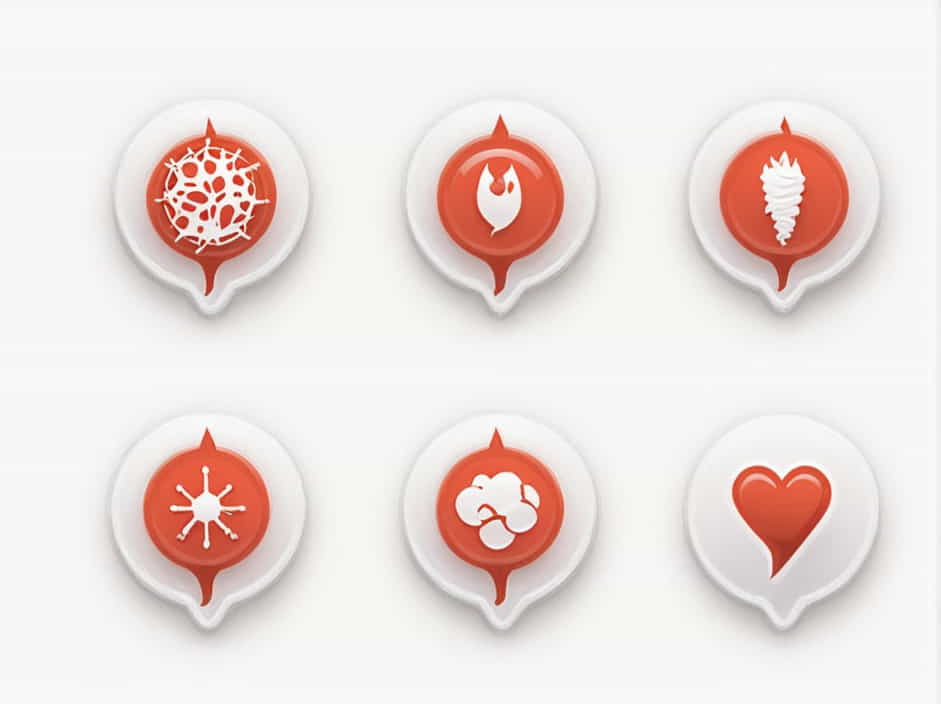Blood clotting, also known as coagulation, is a vital process that prevents excessive bleeding when blood vessels are injured. Without this mechanism, even a small cut could lead to severe blood loss.
This topic explains the stages of blood clotting, the key components involved, and the factors that influence the process. Understanding blood clotting is essential for recognizing blood disorders, cardiovascular risks, and medical treatments related to coagulation.
1. What Is Blood Clotting?
A. Definition of Blood Clotting
Blood clotting is a biological process in which blood transforms from a liquid to a gel-like state to stop bleeding. This occurs when the blood vessel wall is damaged, triggering a series of reactions that lead to the formation of a clot.
B. Why Is Blood Clotting Important?
The coagulation process is essential for:
- Preventing excessive blood loss from wounds or internal injuries.
- Protecting the body from infections by sealing wounds.
- Ensuring normal circulation by controlling clot formation.
However, when clotting happens abnormally, it can lead to dangerous conditions like thrombosis (blood clots in vessels) or hemophilia (inability to clot properly).
2. The Stages of Blood Clotting
Blood clotting follows a step-by-step process involving several components, including platelets, clotting factors, and fibrin. The process consists of three main phases:
A. Vascular Spasm (Vasoconstriction)
- When a blood vessel is injured, it contracts (vasoconstriction) to reduce blood flow to the affected area.
- This helps minimize immediate blood loss and prepares the site for further clotting mechanisms.
B. Platelet Plug Formation
- Platelets (thrombocytes) play a crucial role in the early stages of clotting.
- When they detect injury, they become sticky and clump together at the site of damage, forming a temporary plug.
- Platelets release chemical signals to attract more platelets and enhance clot formation.
C. Coagulation (Blood Clot Formation)
- This is the most complex stage, involving clotting factors (proteins in blood that control clotting).
- The clotting cascade is activated, leading to the conversion of fibrinogen (a soluble protein) into fibrin (an insoluble mesh-like structure).
- Fibrin forms a stable clot by trapping platelets and red blood cells, sealing the injury.
3. The Clotting Cascade: How Blood Clots Form
The coagulation cascade is a series of chemical reactions that involve clotting factors and follows two main pathways:
A. The Intrinsic Pathway
- Triggered when there is damage inside the blood vessel.
- Begins with clotting factors already present in the blood.
- Important for conditions where blood vessels are injured but not exposed to the outside.
B. The Extrinsic Pathway
- Activated by external trauma that exposes the tissue beneath the vessel.
- Tissue factor (Factor III) is released, starting a rapid clotting process.
- This pathway is faster than the intrinsic pathway.
C. The Common Pathway
- Both the intrinsic and extrinsic pathways lead to the activation of Factor X, which starts the final stage of clot formation.
- Prothrombin (Factor II) is converted into thrombin, which then turns fibrinogen into fibrin.
- Fibrin creates a strong, stable clot that prevents further bleeding.
4. Components Involved in Blood Clotting
A. Platelets (Thrombocytes)
- Small blood cells that detect vessel injury and form an initial plug.
- Release chemical signals to attract more platelets.
B. Clotting Factors
- A group of proteins in the blood that control the clotting process.
- Named Factor I to Factor XIII, they work together to form fibrin.
C. Fibrinogen and Fibrin
- Fibrinogen is a soluble plasma protein that converts into fibrin, forming a strong mesh.
- Fibrin stabilizes the clot and prevents further blood loss.
D. Calcium and Vitamin K
- Calcium (Ca²⁺) helps activate clotting factors.
- Vitamin K is essential for producing clotting factors, especially Prothrombin (Factor II).
5. What Happens After Blood Clotting?
A. Clot Retraction
- Once the wound begins healing, the clot shrinks and pulls the wound edges together.
- This process helps restore normal blood flow.
B. Clot Dissolution (Fibrinolysis)
- The body removes the clot once it is no longer needed.
- Plasmin (an enzyme) breaks down fibrin into smaller fragments.
- This ensures that the clot does not remain and cause blockages in blood vessels.
6. Disorders Related to Blood Clotting
Blood clotting must be carefully regulated. Too much or too little clotting can lead to serious health conditions.
A. Excessive Clotting Disorders
- Deep Vein Thrombosis (DVT) – Blood clots form in deep veins, usually in the legs.
- Pulmonary Embolism (PE) – A clot travels to the lungs, blocking blood flow.
- Stroke and Heart Attack – Blood clots in the brain or heart arteries can be fatal.
B. Insufficient Clotting Disorders
- Hemophilia – A genetic condition where the blood lacks certain clotting factors.
- Von Willebrand Disease – A disorder where platelets do not stick properly to damaged vessels.
- Vitamin K Deficiency – Leads to improper clot formation.
7. Factors That Affect Blood Clotting
Several factors can influence how quickly or effectively blood clots:
A. Diet and Nutrition
- Vitamin K-rich foods (leafy greens) help maintain proper clotting.
- Omega-3 fatty acids (found in fish) can thin the blood and reduce clot formation.
B. Medications
- Anticoagulants (blood thinners) like warfarin and heparin prevent excessive clotting.
- Aspirin reduces platelet stickiness, lowering clot risks.
C. Lifestyle Factors
- Smoking and lack of exercise increase the risk of blood clot formation.
- Dehydration makes blood thicker, leading to clotting issues.
The blood clotting process is an essential function that protects the body from excessive bleeding. It involves platelets, clotting factors, and fibrin, following a complex cascade of reactions.
While clotting is crucial, imbalances in the process can lead to serious health risks, including blood clots in veins or excessive bleeding disorders. Maintaining a healthy lifestyle, proper nutrition, and regular medical check-ups can help regulate blood clotting and prevent complications.
